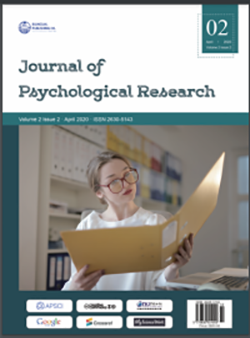-
1541
-
1345
-
1336
-
1329
-
1205
The ‘Psychology’ of Polygraph’: Engendering Differential Salience - Concerns and Caveats
DOI:
https://doi.org/10.30564/jpr.v2i2.1465Abstract
The ‘success’ of a polygraph examination is predicated on the establishment of differential or emotional salience (a ‘psychological set’) with an examinee. This, according to polygraph proponents, guarantees that an examinee will respond appropriately during the administration of the in-test (questioning) phase of the polygraph examination. However, polygraph procedure, as prescribed by its governing body, the American Polygraph Association (APA), is a static clinical Westernised process that does not make any provision for human multiplicity (culture/ethnicity, idiosyncrasies, level of education, language proficiency, ideologies, and so forth). Identical (one size fits all) test procedures are applied across the board – a highly controversial methodology. This article, instead of rigidly focusing on validity and reliability issues per se, explores the degree to which certain intentional and unintentional human behaviour modification strategies have the potential to counterbalance claimed polygraph rectitude from a metaphysical and discursive standpoint. The article exposes concerns (potential flaws) relating to polygraph theory in the context of the ‘psychological set’ and is intended to serve as a caveat regarding the unmitigated use thereof.
Keywords:
Polygraph;psychological set;emotional salience;behaviour modification;veracity;arousal;fear of detection of deceptionReferences
[1] Herbig, F.J.W. Polygraph Screening in the South African Workplace: Veracity Verification or Victimisation? Acta Criminologica, 2018, 31(1): 54-67.
[2] Kwiatkowska, A. How Do Others Deceive? Cultural Aspects of Lying and Cheating. Available at, https://www.academia.edu/33668285/How_Do_Others_Deceive_CulturalAspects_of_Lying_and_Cheating, 2015, (46-72).
[3] Hesselink, A.E., & Herbig, F.J.W. Polygraph Potential in South African Corrections: in Pursuit of Reform, Reintegration and Recidivism Reduction. Acta Criminologica, Special Edition, 2015, 2: 94-105.
[4] Lewis, J.A., & Cuppari, M. The polygraph: The truth lies within. Journal of Psychiatry and Law, 2009, 37(1): 85-92.
[5] Grubin, D. The Polygraph and Forensic Psychiatry. Journal of the American Academy of Psychiatry and the Law, 2010, 38(4): 446-451).
[6] Saxe, L. Science and the CQT Polygraph. A Theoretical Critique. Integrative Physiological and Behavioural Science, 1991, 26(3): 223-231.
[7] Reinach, L., & Louw, D.A. The Relationship Between Anxiety And Polygraph Results. Acta Criminologica, 2002, 15(3), 56-67.
[8] Memon, A., Vrij, A., & Bull, R. Psychology and Law: Truthfulness, accuracy and credibility, 1998, London: McGraw-Hill).
[9] Tooker, J.L. The relationship between integrity and personality in law enforcement applicants, 2012, Polygraph, 41(4): 209-220.
[10] Vrij, A. Detecting lies and deceit: The psychology of lying and the implications for professional practice, 2000, New York: John Wiley & Sons.
[11] Wallace, J. Lying. The Ethical Spectacle. (2000). Available at www.spectacle.org, accessed on 25 November 2019.
[12] Gozna, F. G., Vrij, A. & Bull, R. The impact of individual differences on perceptions of lying in everyday life and in a high stake situation. Journal of Personality and Individual Differences, 2001, 31: 1203-1216.
[13] Mars, G. Cheats at work: an anthropology of workplace crime, 1982, London: George Allen & Unwin Ltd.
[14] Carrabine, E., Cox, P., Fussey, P., Hobbs, D., South, N., Thiel, D. & Turton, J. Criminology. A sociological introduction. (Third edition), 2014, London: Routledge.
[15] Handler, M., Shaw, P. & Gougler, M. Some Thoughts about Feelings: A Study of the Role of Cognition and Emotion in Polygraph Testing. Polygraph, 2010, 39(3): 139-154.
[16] Raskin, D.C., Honts, C.R., & Kircher, J.C. Credibility Assessment. Scientific Research and Applications, 2014, Academic Press, Oxford.
[17] Tafarodi, R.W., & Swann, W.B. Self-liking and self-competence as dimensions of global self-esteem: initial validation of a measure, Journal of Personality Assessment, 1995, 65(2): 322-342.
[18] Schmidt, J. A. & Ryan, A. M. The Big Five in personnel selection: Factor structure in applicant and nonapplicant populations. Journal of Applied Psychology, 1993, 78: 966-974.
[19] Detrick, P., Chibnall, J.B. & Call, C. Demand effects on positive response distortion by police officer applicants on the revised NEO Personality Inventory. Journal of Personality Assessment, 2010, 92(5): 410-415.
[20] . Schlenker, B. R., & Weigold, M. F. Self-identification and accountability, in Impression Management in the Organization (Edited by Robert Giacalone & Paul Rosenfield), 1989, New Jersey: Lawrence Erlbaum Associates.
[21] Kassin, S., Fein, S., & Markus, H. R. Social Psychology (7th Edition), 2008, Belmont, CA: Wadsworth Cengage Learning.
[22] Snyder, M., & Copeland, J. Self-monitoring processes in organizational settings, in Impression Management in the Organization (Edited by Robert Giacalone & Paul Rosenfield), 1989, New Jersey: Lawrence Erlbaum Associates.
[23] Cai, H., Kwan, V.S.Y., & Sedikes, C. A Sociocultural Approach to Narcissism: The Case of Modern China. European Journal of Personality, 2012, 26: 529-535.
[24] Baumeister, R.F., Smart, L., & Boden, J.M. Relation of Threatened Egotism to Violence and Aggression: The Dark Side of High Self-Esteem, Psychological Review, 1996, 103: 5-33.
[25] Bizumic, B., & Duckitt, J. “My Group Is Not Worthy of Me”: Narcissism and Ethnocentrism, Political Psychology, 2008, 29(3): 437-453.
[26] Raskin, D. Science and the Polygraph Profession. APA Magazine, 2015, 48(2): 25-28.
[27] Amsel, T.T. Where There is Doubt, There is Freedom. APA Magazine, 2015, 48(2): 32-34.
Downloads
How to Cite
Issue
Article Type
License
Copyright © 2020 Friedo Herbig

This is an open access article under the Creative Commons Attribution-NonCommercial 4.0 International (CC BY-NC 4.0) License.




 Friedo Herbig
Friedo Herbig





